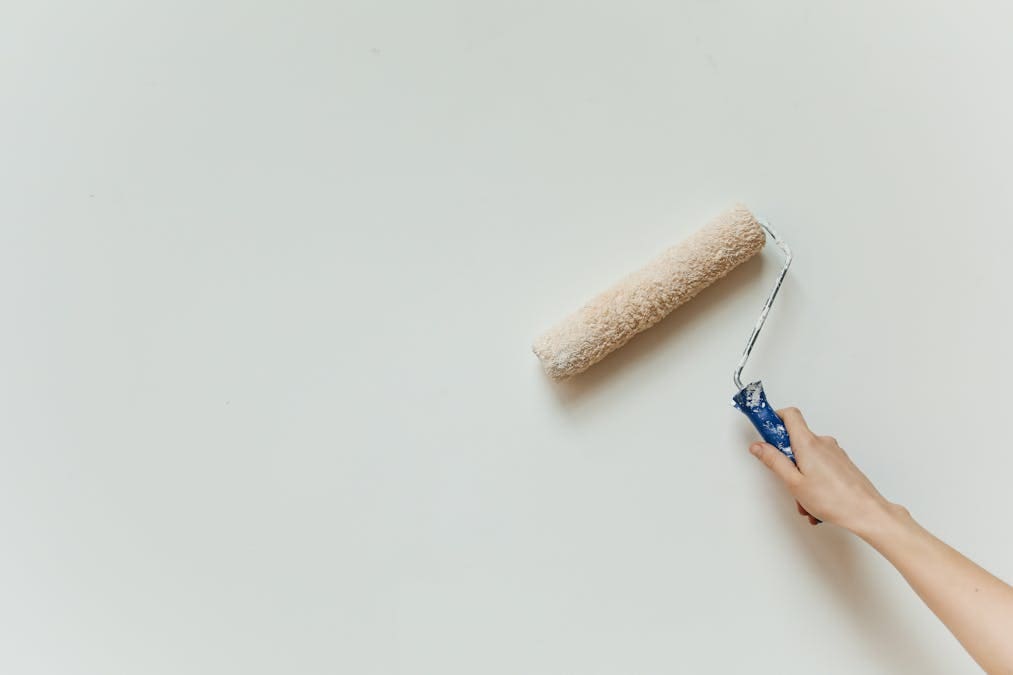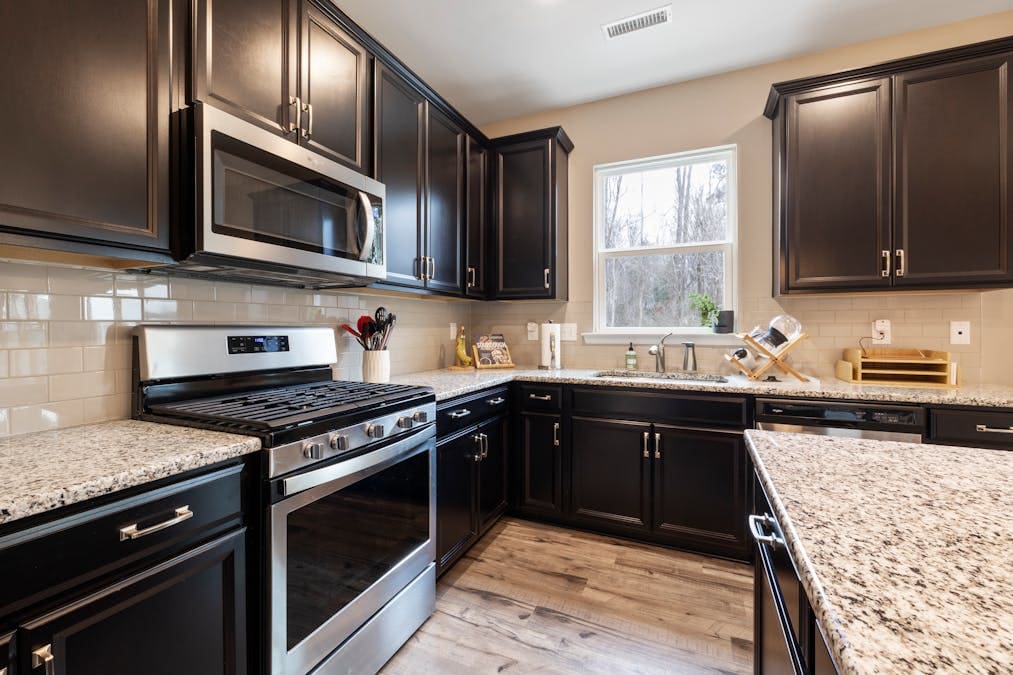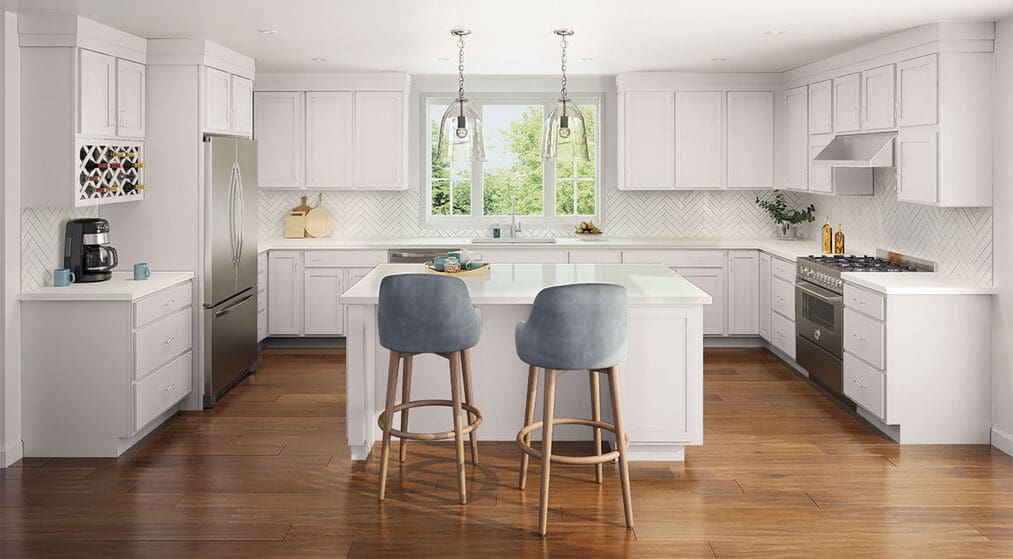How Often Should You Repaint the Inside of Your Home?

Paint does more than just make your home look nice. It protects your walls, brightens your space, and even boosts your mood. But over time, even the best paint jobs start to fade, scuff, or feel dated. So the question becomes: how often should you repaint interior walls?
There’s no one-size-fits-all answer. It depends on where you live, how each room is used, and what kind of paint was applied in the first place. In this guide, we’ll break it down room by room, so you can decide if it’s time to freshen things up—and whether it’s a DIY job or time to call in the pros.
General Guidelines for Interior Repainting
If you’re wondering whether your home is due for a refresh, the general rule of thumb is to repaint most interior walls every 5 to 7 years. But that number can shift depending on how much wear and tear your space endures.
Here are a few key factors that affect how often you’ll need to repaint:
- Room usage – High-traffic areas like kitchens, bathrooms, and hallways show signs of wear faster than quiet spaces like guest bedrooms.
- Paint quality and finish – Higher-quality paint products with proper prep work last longer. Glossy and semi-gloss finishes tend to be more durable than flat or matte finishes.
- Wall condition and lighting – Fading, dents, and discoloration are more noticeable in rooms with strong natural light or darker wall colors.
- Climate and humidity – In places like West Michigan, seasonal humidity fluctuations can cause subtle expansion and contraction, which, over time, affect paint adhesion.
Ultimately, the best way to decide when it’s time to repaint is to observe the condition of your walls and how the space is used. In the next section, we’ll take a closer look at room-by-room timelines to give you a clearer picture.
Room-by-Room Repainting Timelines
Different rooms in your home endure different levels of activity, and that plays a major role in how often they need repainting. Let’s take a look at the average timelines, plus what factors can shorten or extend those cycles.
Living Rooms and Adult Bedrooms: Every 5–7 Years
- These rooms typically experience less wear, especially if you don’t have young children or pets.
- If high-quality paint was used and the surfaces were properly prepped, you may even stretch to 8 years or more.
- Use washable finishes like eggshell or satin to help extend the lifespan.
Kitchens and Bathrooms: Every 3–4 Years
- These spaces face high humidity, moisture, and oils from cooking or shower steam.
- Stains and surface buildup are more common, which can cause paint to degrade faster.
- Look for mold- and mildew-resistant paints in satin or semi-gloss finishes for best durability.
Hallways and Entryways: Every 2–4 Years
- These are the most frequently touched and bumped areas in a home
- Scuffs from backpacks, pets, keys, or furniture add up quickly.
- Durable, washable paint finishes are a must here, and more frequent touch-ups are expected.
Children’s Bedrooms or Playrooms: Every 2–3 Years
- Walls in kids’ spaces take a beating—think markers, sticky fingers, and energetic play.
- If repainting often, consider using neutral colors that can evolve with their age and style.
Ceilings and Trim: Every 7–10 Years
- These surfaces don’t see as much contact, but they can discolor over time from dust, sunlight, or indoor air pollution.
- Use long-lasting enamel paints on trim for a clean look that resists yellowing and chipping.
Knowing how often you should repaint interior walls by room helps you plan ahead, whether you’re doing a full home refresh or just tackling high-traffic zones one at a time.
Signs It’s Time to Repaint
Even if you’re not tracking the years since your last paint job, your walls will often tell you when it’s time for a refresh. Beyond obvious damage, several subtle cues indicate your interior paint is past its prime.
Here are the top signs to look for:
- Fading or discoloration: UV rays from windows can fade paint, especially in darker shades. If your color looks dull or uneven, it’s time to repaint.
- Scuffs, dents, or stains that won’t clean off: Walls in high-use areas will eventually show wear that can’t be scrubbed away. Persistent marks are a good cue to repaint.
- Peeling, bubbling, or cracking paint: These signs suggest poor adhesion, moisture damage, or aging paint. Addressing them promptly can prevent further wall damage.
- Chalky residue on the wall surface: If rubbing your hand along the wall leaves a fine powder, the paint’s binders have begun to break down and need replacement.
- You’re updating other parts of the home: New floors, fixtures, or furniture can clash with old wall colors. Repainting is often the finishing touch that brings everything together.
Whether it’s cosmetic or functional, recognizing these signs early helps you stay ahead of deterioration—and keeps your home looking fresh and well cared for.
Why Hiring a Pro Makes a Difference
Repainting might seem like a simple weekend project, but for results that truly last, hiring a professional is a game-changer. From prep to finish, expert painters bring efficiency, precision, and product knowledge that elevate the outcome far beyond what most DIY jobs deliver.
Here’s why going with a pro is worth it:
Better Surface Prep = Longer-Lasting Paint
Professionals know that good prep is the foundation of a great paint job. That means:
- Repairing minor dents and dings
- Cleaning walls thoroughly
- Applying primer where needed
- Using the right techniques for a flawless finish
Product Knowledge for Each Room Type
Every room has different needs, and pros know which paints stand up best to humidity, touch, and wear. From satin in kitchens to matte in bedrooms, the right formula ensures longevity.
Time-Saving and Stress-Free
A professional team can complete most interior painting jobs in a fraction of the time it takes a homeowner, without the mess or missed spots.
Sharp Edges, Clean Lines, and No Streaks
Experienced painters leave no roller marks, brush strokes, or messy edges—just a smooth, uniform finish.
If you’re wondering how often you should repaint interior walls and whether your home is ready, a professional consultation can give you clarity and confidence. TNC Painting offers full-service interior painting with results designed to last for years, not just months.
Keep Your Home Looking Its Best
Whether you’re refreshing a single room or planning a whole-home update, understanding how often you should repaint interior walls is key to keeping your space beautiful, healthy, and protected.
- Living areas might only need repainting every 5–7 years.
- High-use spaces like kitchens, bathrooms, and hallways need attention more often.
- And whenever you see signs of wear—fading, damage, or discoloration—it’s likely time to refresh.
By working with a trusted professional, you’ll not only get a finish that looks great, but one that truly lasts. At TNC Painting, we take pride in delivering seamless, high-quality results tailored to your lifestyle and your space.
Request a quote or explore our interior painting services today—and let’s keep your home looking its best, one coat at a time.




